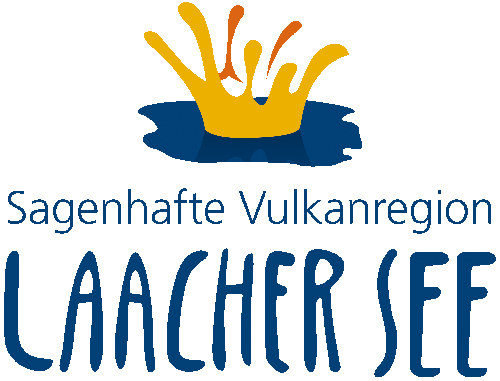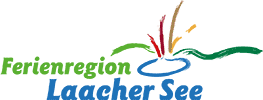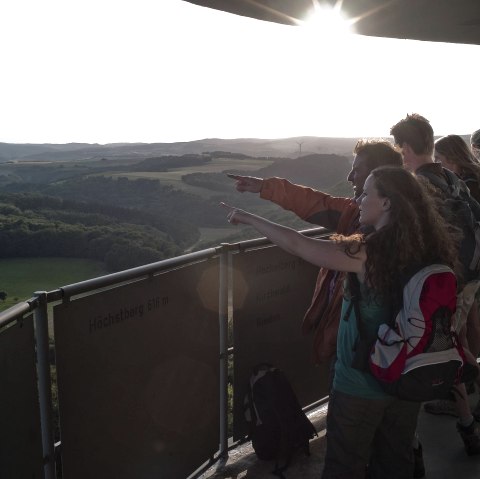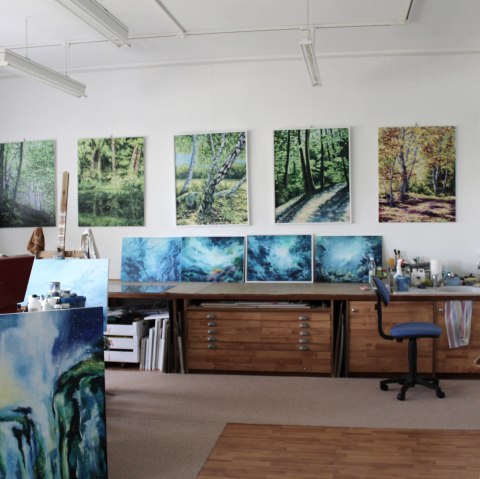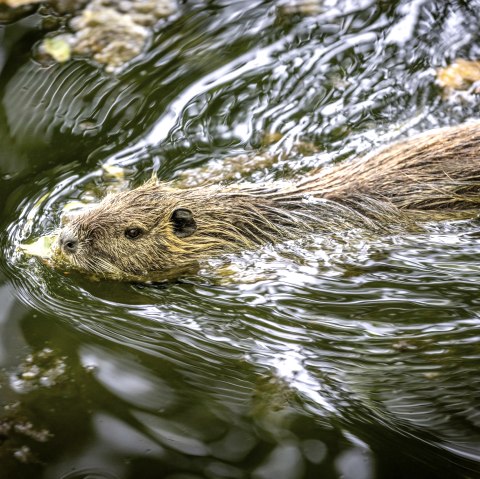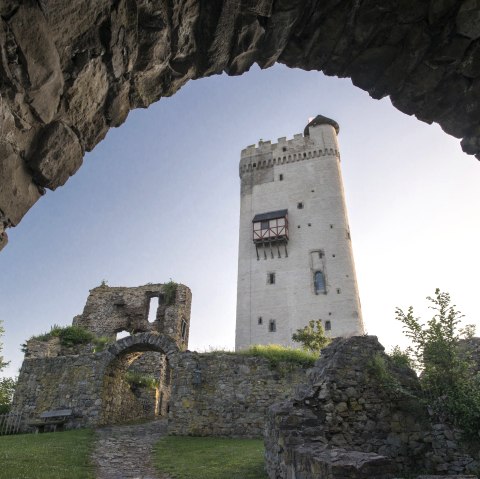Aussichtspunkt "Teufelskanzel"
Kruft
The vantage point "Teufelskanzel" is located on the "Krufter Ofen", a basalt slag volcano south of the Laacher See.
The panorama with a view of the “Neuwied Basin” shows the town of Neuwied on the right bank of the Rhine and the municipality of Mülheim-Kärlich to the east. Until recently, the cooling tower of the Mülheim-Kärlich nuclear power plant on the left bank of the Rhine could still be seen in between. The power plant, which went into operation on March 1, 1986, was the only nuclear power plant in Rhineland-Palatinate.
Due to a faulty building permit process, it had to be taken offline on September 9, 1988.
However, due to the ongoing dismantling work, the striking cooling tower has already disappeared from the landscape.
Further to the south-east, four of the five local parishes of the Pellenz association with around 16,500 inhabitants are visible. Plaidt is the largest place and houses the administrative headquarters.
Plaidt's local mountain is the Plaidter Hummerich (approx. 225m), where volcanic rock is still actively mined.
Also worth seeing is the Vulkanpark information center between Plaidt and Saffig. It gives a comprehensive and exciting overview of the approximately 13,000-year-old history of volcanism in the Eastern Eifel and is the central point of contact for the volcanic park. Where the largest Roman underground tufa mining area north of the Alps was once located, the Meurin Roman mine, which is part of the volcano park, is located in Kretz today.
The Romans mined the volcanic tuff underground in tunnels. These were found and exposed during dismantling work by the Meurin company.
The accessible mining shafts offer a deep insight into the historical underground. The 295 m high Korretsberg is also of volcanic origin and has been a nature reserve since 1988.
The "Korret" extends southeast of the municipality of Kruft, the center of which is still largely characterized by the dark "Krotzen houses". In the middle of the 19th century, “Krotzen”, porous and easily workable rocks that were created from magma enriched with gases, were a popular building material.
The Koblenz telecommunications tower can be seen further south. It stands in the Koblenz city forest on the summit of the Kühkopf. The telecommunications tower is the second tallest structure in the Hunsrück and the third tallest structure in Rhineland-Palatinate.
The cinder volcanoes Michelberg and Karmelenberg as well as the municipality of Ochtenung, which belongs to the Maifeld association, are also visible.
These hiking trails lead past the Teufelskanzel viewpoint:
Premium hiking trail dream path "Pellenzer Seepfad" and Geopfad-Route N "Panoramaweg Eppelsberg".
